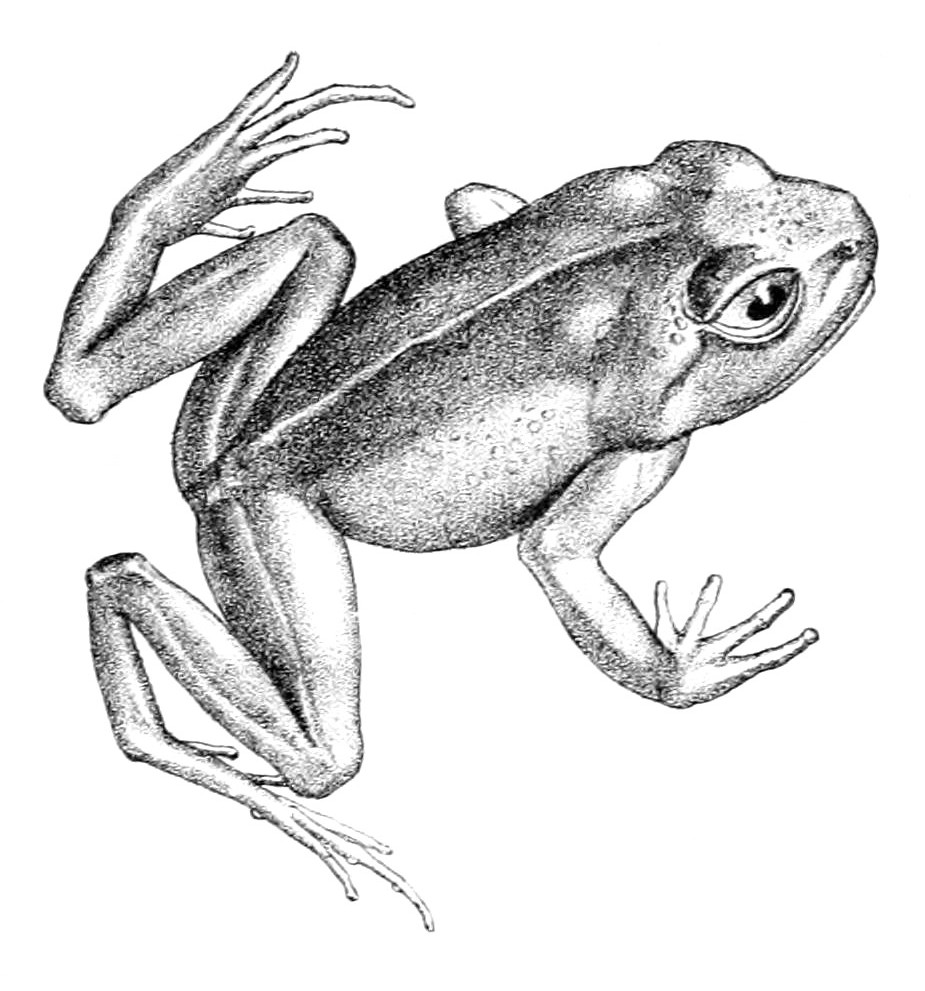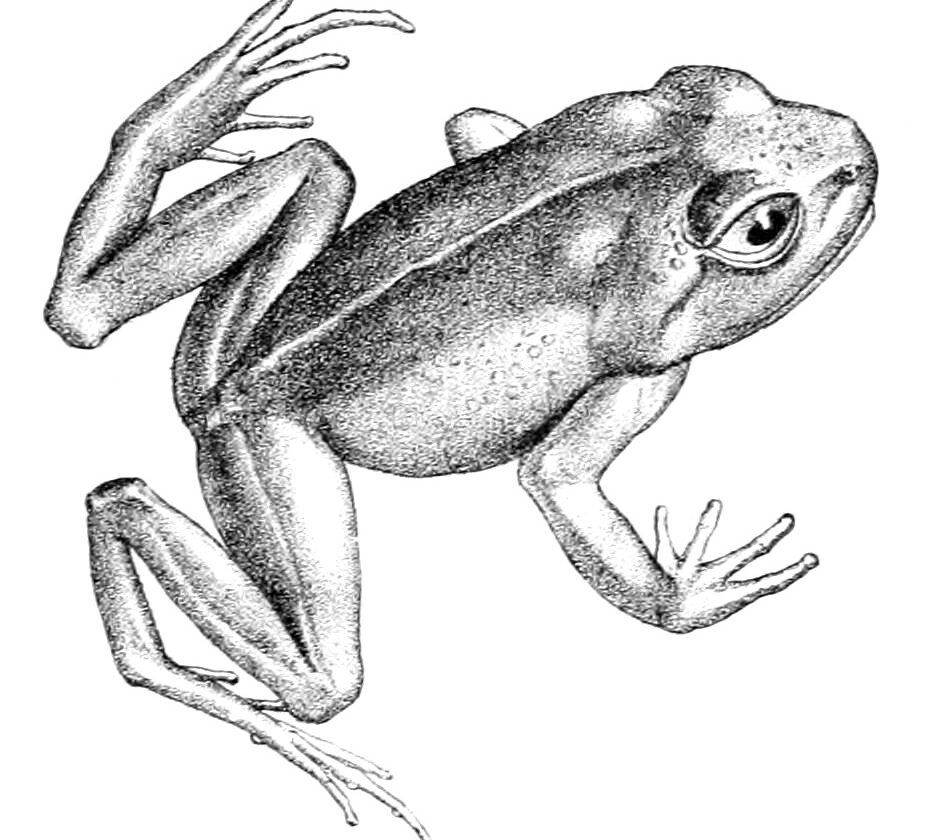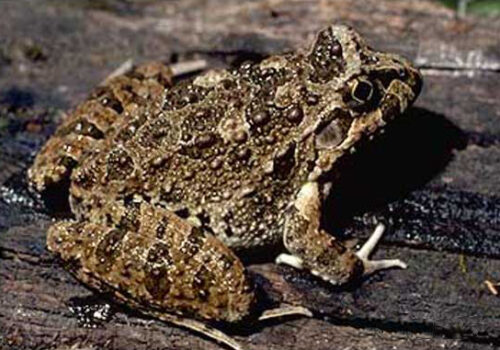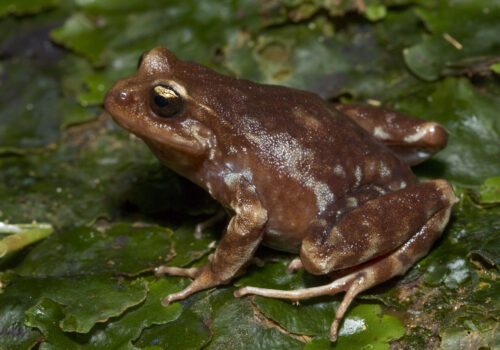- Introduction: The Enigma of Patagonia’s Hidden Amphibian
- Taxonomy and Classification: Understanding Alsodes coppingeri’s Unique Lineage
- Natural Habitat: A Portrait of Patagonia’s Wilderness
- Physical Characteristics: Built to Endure, Born to Blend
- Behavior and Life Cycle: Stories Beneath the Leaves
- Ecological Role: A Quietly Crucial Link
- Threats and Conservation Status: Facing a Changing World
- Cultural and Scientific Significance: More than a Frog
- Conclusion: Preserving Patagonia’s Tiny Guardian
Introduction: The Enigma of Patagonia’s Hidden Amphibian#
In the remote, mist-clad forests and pristine streams of Patagonia dwells a frog rarely encountered by humans—the elusive Alsodes coppingeri. Often hidden beneath stones or amid leaf litter, this amphibian shares its habitat with some of South America’s most astonishing biodiversity. Known among locals yet scarcely studied by researchers, this species holds many secrets waiting to unfold. Its subtle presence in Patagonia’s ecosystems underscores the complexities of life thriving quietly, often unnoticed, at our very feet.
Alsodes coppingeri, commonly known as Coppinger’s Spiny-chest Frog, captivates herpetologists due to its cryptic lifestyle and its remarkable physiological adaptations. Named in honor of Richard William Coppinger, a naturalist known for his exploration around Southern South America, this frog offers insights into how amphibians survive—and even flourish—in the challenging conditions of Patagonia.
Taxonomy and Classification: Understanding Alsodes coppingeri’s Unique Lineage#
The Spiny-chest Frog belongs to the family Alsodidae, a fascinating group of frogs uniquely adapted for cooler climates of southern South America. Within this family, the genus Alsodes encompasses several species, all exhibiting specialized adaptations to their distinct ecological niches.
Scientifically classified as Alsodes coppingeri, this frog was formally described in 1881, highlighting its longstanding recognition within scientific circles. Its closest relatives include species such as Alsodes gargola and Alsodes verrucosus, each representing variations of an evolutionary narrative shaped by Patagonian isolation and environmental constraints.
Natural Habitat: A Portrait of Patagonia’s Wilderness#
Patagonia captivates imaginations worldwide, sculpted by ice and wind, its landscapes stretching across southern Chile and Argentina. It is here, within temperate forests interwoven with crystal-clear mountain streams, that the elusive Alsodes coppingeri finds its home.
Preferring shaded surroundings, these frogs typically inhabit mature temperate rainforests or dense woodlands, particularly where moisture levels remain consistently high. They thrive near pristine, slow-flowing streams and ponds, areas enveloped by an ever-green canopy, abundant mosses, and thick carpets of leaf litter—ideal refuge and hunting ground alike.
The dense vegetation and complex root systems provide not just protection from predators but also critical microhabitats that facilitate their unique lifestyle. Due to their cryptic and secretive nature, spotting one often becomes a memorable event reserved for those who intimately know and respect the subtle joys and wonders hidden in Patagonia’s untamed wilderness.
Physical Characteristics: Built to Endure, Born to Blend#
At first glance, Alsodes coppingeri may appear modest, blending seamlessly into its surroundings with subtle coloration that ranges from olive-green to earthy-brown hues. Adult frogs are generally about 5 to 7 centimeters in length, showcasing the perfect balance to remain discreet, yet large enough to endure colder environments.
One distinctly intriguing feature is the presence of tiny spiny protrusions on their chest and sides. These small keratinized spines have given rise to their common name, the Spiny-chest Frog, and serve differentiating purposes, potentially assisting during territorial interactions or mating.
The skin texture is notably rough, often described as wart-like, providing the invaluable trait of remarkable camouflage. Such cryptic coloration not only protects them from predators but also allows ambush hunting within the forest floor’s leaf litter, mosses, and debris, ensuring their survival in an uncompromising environment.
Behavior and Life Cycle: Stories Beneath the Leaves#
An Unassuming Predator#
Alsodes coppingeri thrives on a diet predominantly comprising insects, spiders, and other small invertebrates abundant on the Patagonian forest floor. With their powerful legs and secure grip upon the moist ground, these expertly camouflaged nocturnal predators deliver quick, stealthy strikes, efficiently managing pests and contributing to ecological balance.
A Life Cycled by Nature’s Rhythms#
Reproduction is strategically attuned to the seasonal cycles. As winter melts into spring, males venture towards streams and shallow ponds, their soft yet resonant calls a nighttime symphony resonating gently through damp forests. Females deposit gelatinous clusters of eggs concealed carefully among submerged vegetation or securely hidden along calm stream margins, sheltered from predators and rapidly changing waters.
Upon hatching, tadpoles flourish quietly in freshwater streams, surviving mainly from algae and organic detritus. Tadpoles gradually metamorphose over the summer months into miniature adults, ready to begin their journey of discreet survival.
Ecological Role: A Quietly Crucial Link#
Although Alsodes coppingeri may go unnoticed by many, it holds significant influence within Patagonia’s intricate food web. By controlling insect populations, they support forest health, indirectly facilitating pollination and plant reproduction.
Conversely, Alsodes coppingeri represents valuable prey to birds such as black-faced ibises, predatory mammals, and even other amphibians. This duality places amphibians at a nexus of ecological interactions, promoting biodiversity and sustaining balance in these remote ecosystems.
Crucially, this species acts as an indicator species, signaling subtle shifts within its habitat, thus allowing ecologists to monitor environmental quality. Declines or disruptions within Alsodes coppingeri populations become early warnings of habitat degradation or climatic shifts, further underscoring their profound ecological significance.
Threats and Conservation Status: Facing a Changing World#
Adaptive yet Vulnerable#
Despite their resilience, Patagonian frogs stand vulnerable against accelerating threats of habitat fragmentation, climate change, and increasing human activities. Forest degradation and deforestation, driven by agriculture, infrastructure development, and logging, continues damaging crucial amphibian habitat.
Climate change poses another emerging threat, reshaping Patagonia’s delicately balanced ecosystems. Variations in temperature and rainfall patterns could disrupt breeding cycles and availability of insect prey, affecting survival and reproductive success rates significantly.
Current Conservation Initiatives#
Today, Alsodes coppingeri holds a Near Threatened status according to the International Union for Conservation of Nature (IUCN). Protected forests, national parks, and dedicated reserves offer safe havens, safeguarding core habitats essential for stable populations. Groups of dedicated biologists, conservationists, and citizen scientists are working tirelessly, studying population dynamics, raising awareness, and fostering habitat rеstoration projects within Patagonia.
To explore how conservation projects impact species like Alsodes coppingeri, read about efforts in nearby habitats in our article “Forest Conservation Initiatives in Patagonia“.
Cultural and Scientific Significance: More than a Frog#
Rich in biodiversity and cultural heritage, Patagonia’s indigenous cultures have long recognized amphibians’ ecological role, embedded in local mythology as symbols of resilience and natural guardians. As modern science deepens ecological understanding, Alsodes coppingeri emerges as more than just a species—it is a symbol of healthy ecosystems, pristine habitats, and indicators of ecological wellness.
Scientists are actively studying the enzymes and compounds produced by these frogs, potentially aiding medical and ecological research. Learning more about their biology may unlock future scientific advancements—from pharmaceutical breakthroughs to ecological resilience strategies.
Conclusion: Preserving Patagonia’s Tiny Guardian#
Alsodes coppingeri remains a gem hidden within Patagonia’s wilderness, modest in appearance yet profound in ecological value. Understanding and safeguarding this remarkable amphibian fortifies our collective responsibility to protect Patagonia’s pristine ecosystems.
By deepening our appreciation of lesser-known species, we enrich our broader commitment to planetary conservation. Curious readers and conservation advocates can also learn more about related species in our guide: “Amphibians of Southern Chile: Hidden Treasures of the Forest“.
Together, let us ensure Patagonia remains a sanctuary, a refuge where species like Alsodes coppingeri thrive as they have for countless generations, quietly maintaining nature’s balance.










